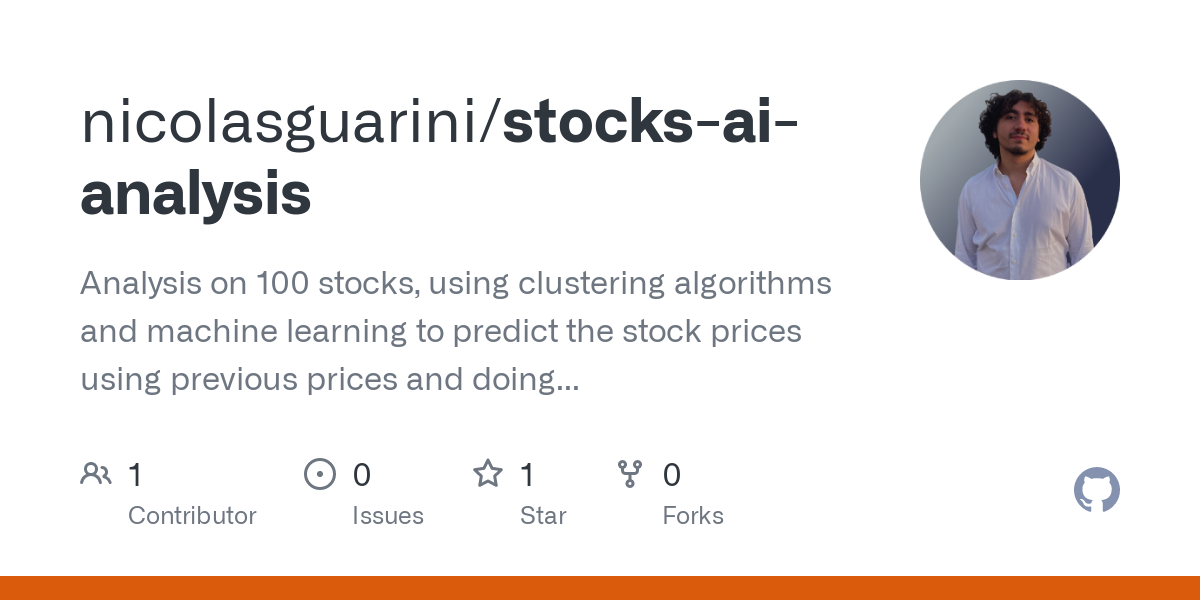20 Free Tips For Picking Ai Trading Bots
20 Free Tips For Picking Ai Trading Bots
Blog Article
Top 10 Tips On How To Use Sentiment Analysis To Help You Trade Stocks Ai From The Penny To copyright
It is essential to utilize sentiment analysis while trading AI stocks, particularly in penny stocks and copyright markets where sentiment is key. Here are ten top tips to use sentiment effectively to your advantage in these markets.
1. Sentiment Analysis What exactly is it, and why is it so important?
Tips: Be aware of how sentiment affects short-term changes in price, especially for speculative assets such as penny stock and copyright.
Why: The public's sentiment is usually a key indicator of price movements, and therefore a good signal to invest.
2. AI-powered analysis of various sources of data
Tip: Incorporate diverse data sources, including:
News headlines
Social media (Twitter Reddit Telegram etc.
Forums and blogs
Earnings Calls and Press Releases
Why: Broader coverage allows for an overall picture of sentiment.
3. Monitor Social Media in Real Time
Tip: To keep track of trending discussions, use AI tools such as Sentiment.io (StockTwits), LunarCrush (Sentiment.io) or StockTwits.
For copyright The focus should be on influential people.
For Penny Stocks: Monitor niche forums like r/pennystocks.
The reason Real-time Tracking is a great tool to capitalize on emerging Trends
4. The focus is on the analysis of sentiments
Consider metrics such:
Sentiment Score: Aggregates positive vs. negative mentions.
Monitors the hype or buzz about an asset.
Emotional Analysis: Assesses the intensity, fear, and apprehension.
The reason: These indicators can provide insights into the market's psychology.
5. Detect Market Turning Points
Tips Use the data on sentiment to spot extreme positivity (market Peaks) or negative trends (market bottoms).
Why: Contrarian strategies often prosper at extremes in sentiment.
6. Combining sentiment with technical indicators
TIP: Mix sentiment analysis with conventional indicators like RSI, MACD, or Bollinger Bands for confirmation.
The reason: An emotional response may be misleading. A technical analysis provides some context.
7. Integration of Sentiment Information with Automated Systems
Tips: AI trading bots should integrate sentiment scores in their algorithms.
The reason: Automation allows for rapid response to sentiment shifts in markets that are volatile.
8. Account for Sentiment Management
Avoid pump-and-dump scams and fake stories, particularly in copyright or penny stocks.
How do you use AI tools to detect abnormalities, such as sudden increases in mentions of accounts that are suspicious or sources that aren't of high-quality.
What is the benefit of recognizing manipulators it is possible to avoid fake signals.
9. Backtest Sentiment-based Strategies based on the back of a sym
Tip : Try to test how sentiment-driven trades perform in the past under market conditions.
The reason is that you can use sentiment analysis to improve the strategies you employ to trade.
10. Monitoring the sentiment of major influencers
Make use of AI to monitor important market influencers, such as analysts, traders and copyright developers.
Pay attention to the tweets and postings of figures like Elon Musk or other prominent blockchain founders.
For penny stocks: listen to analysts from the industry, activists or other investors.
Why: Influencer opinions can greatly influence market opinions.
Bonus: Combine Sentiment and Fundamental Data with On-Chain
Tip: Integrate sentiment and fundamentals (like earnings) when trading penny stocks. For copyright, you can also utilize on-chain information, like wallet movements.
The reason: Combining various kinds of data provides a more holistic view, and less emphasis is placed on sentiment.
With these tips you can apply sentiment analysis to the AI-based strategies you employ to trade for penny stocks and cryptocurrencies. See the most popular ai stock prediction examples for more info including ai stock prediction, ai stocks, best ai stock trading bot free, ai stock trading bot free, stock ai, smart stocks ai, ai copyright trading, stock ai, ai stock picker, ai penny stocks to buy and more. 
Top 10 Tips For Paying Attention To Risk Metrics Ai Stocks, Stock Pickers And Investments
Risk metrics are crucial to ensure that your AI prediction and stock picker are in line with the current market and not susceptible to market fluctuations. Understanding and minimizing risk is crucial to shield your portfolio from massive losses. It also lets you make informed data-driven decisions. Here are ten tips for integrating AI stock-picking and investment strategies using risk-related metrics:
1. Understand Key Risk Metrics Sharpe Ratio, Maximum Drawdown, and Volatility
TIP: To gauge the effectiveness of an AI model, focus on the most important indicators like Sharpe ratios, maximum drawdowns and volatility.
Why:
Sharpe ratio is a measure of return relative to risk. A higher Sharpe ratio indicates better risk-adjusted performance.
Maximum drawdown assesses the largest loss from peak to trough, helping you to understand the possibility of large losses.
Volatility measures the market's volatility and fluctuation in price. A lower volatility level indicates stability, while high volatility indicates higher risk.
2. Implement Risk-Adjusted Return Metrics
Tip - Use risk-adjusted return metrics such as Sortino ratios (which focus on risks that are downside) and Calmars ratios (which evaluate returns against maximum drawdowns) to evaluate the true performance your AI stock picker.
Why: These metrics measure the extent to which your AI models perform in relation to the amount of risk they take on. They allow you to assess whether the ROI of your investment is worth the risk.
3. Monitor Portfolio Diversification to Reduce Concentration Risk
Tip: Use AI to help you optimize and manage the diversification of your portfolio.
What is the reason? Diversification can help reduce concentration risk. Concentration occurs when a portfolio becomes too dependent on one particular stock or sector, or market. AI helps to identify the connections between assets and make adjustments to the allocations to reduce the risk.
4. Track Beta to Determine Market Sensitivity
Tip - Use the beta coefficient to determine how to determine how responsive your portfolio is to overall market changes.
Why: A portfolio that has a beta higher than 1 is more volatile than the market. Conversely, a beta lower than 1 indicates a lower level of volatility. Knowing the beta helps you adapt your risk exposure to market movements and the investor's risk tolerance.
5. Implement Stop-Loss and Take-Profit Levels Based on risk tolerance
Use AI models and forecasts to determine stop-loss levels as well as levels of take-profit. This will help you reduce your losses while locking in the profits.
What's the reason? Stop-losses safeguard the investor from excessive losses, while take-profit levels lock in gains. AI can help identify the optimal levels based on past prices and volatility, ensuring an equilibrium between risk and reward.
6. Monte Carlo simulations are useful for risk scenarios
Tip : Monte Carlo models can be used to evaluate the possible results of portfolios in different risk and market conditions.
What is the reason? Monte Carlo simulations are a method to gain an accurate picture of the future performance of a portfolio. It allows you to better plan for risky scenarios like high volatility and massive losses.
7. Assess the correlations between them to determine systemic and non-systematic risk
Tips: Make use of AI for analyzing the correlation between your portfolio and broad market indexes to identify both systemic and unsystematic risk.
The reason is that while risk that is systemic is common to the market in general (e.g. the effects of economic downturns conditions) while unsystematic risks are unique to assets (e.g. concerns pertaining to a specific company). AI can be utilized to detect and minimize unsystematic or correlated risk by recommending lower correlation assets.
8. Monitor Value At Risk (VaR) and determine the amount of the possibility of loss
Tips Utilize VaR models to determine the potential loss within a portfolio for a particular time.
Why: VaR allows you to assess the risk of the worst scenario of loss and to assess the risk of your portfolio in normal market conditions. AI will assist in the calculation of VaR dynamically, to adapt to changes in market conditions.
9. Set dynamic risk limit that is based on current market conditions
Tips. Make use of AI to adjust your risk limits dynamically based on the volatility of the market and economic environment.
The reason: Dynamic risks your portfolio's exposure to risk that is excessive in the event of high volatility or uncertain. AI can analyze the data in real time and adjust your portfolios to keep a risk tolerance that is acceptable.
10. Machine learning is a method to predict tail events and risk elements
Tip Integrate machine learning to predict extreme risk or tail risk events (e.g. black swans, market crashes, market crashes) Based on previous data and sentiment analysis.
Why: AI can assist in identifying patterns of risk, which traditional models may not be able to detect. They can also predict and prepare you for the most rare however extreme market conditions. Tail-risk analysis helps investors prepare for the possibility of massive losses.
Bonus: Regularly Reevaluate Risk Metrics based on changing market Conditions
TIP: Continually refresh your risk and model metrics to reflect any changes in geopolitical, financial, or financial variables.
What's the reason? Market conditions are constantly changing. Letting outdated risk assessment models can lead to inaccurate assessments. Regular updates are essential to ensure your AI models can adapt to the latest risk factors, and also accurately reflect market trends.
This page was last modified on September 29, 2017, at 19:09.
You can design an investment portfolio that is more adaptive and resilient by closely tracking risk indicators, and then incorporating them in your AI predictive model, stock-picker, and investment strategy. AI is a powerful tool that allow you to monitor and evaluate the risk. Investors are able make informed choices based on data and balance potential returns with acceptable risks. These guidelines can assist you in creating an effective risk management strategy which will increase the stability of your investment and increase its profitability. Read the top rated find for ai trade for blog advice including ai trading, ai for investing, best ai for stock trading, ai stock prediction, ai for stock trading, ai trading software, penny ai stocks, best ai copyright, best ai stock trading bot free, ai trader and more.